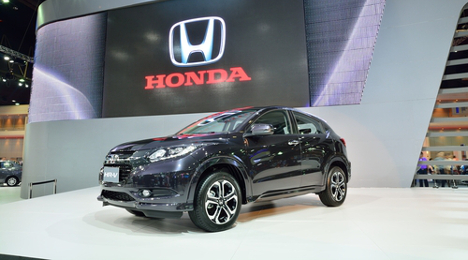Lithia’s leadership has been long touting a goal to average 75 used-vehicle sales per store per month. At the end of the first quarter this year, the group was sitting at roughly 57 units per store.
By the end of September, Lithia’s monthly average has seen a solid gain.
“On a 12-month rolling average, we sold 61 used vehicles per store, up from 55 units in the comparable period last year,” said Bryan DeBoer, the company’s president and chief executive officer. “Our goal to retail 75 used units per store still provides considerable upside in the future.”
Aside from the company’s industrious acquisition strategy, DeBoer says the group is also focusing on strengthening internally.
“We continue to grow used-vehicle sales as inventory resupply increases in the marketplace,” DeBoer said. “Additionally our stores continue to recruit and develop used-vehicle managers with the ability to source, recondition and merchandize used inventories.”
According to the company, several used-vehicle metrics jumped in the third quarter. Here’s a brief breakdown of Q3 same-store results from DeBoer that weren’t specified in the company’s released results:
- Certified unit sales increased 19 percent
- “Core” unit (aged 3-5 years) sales increased 8 percent
- “Value Auto” unit (mileage over 80,000 miles, any age) sales increased 5 percent
With its used-vehicle sales leading the way in revenue stream increases in Q3, DeBoer also mentioned that the company’s used-to-new sales ratio was brought up to 0.83:1.
So how will the seasonal trend of increased supply affect Lithia’s pricing scheme?
“If we look at residual values and we look at what we believe will be future trends, what we're starting to see initially is that there’s starting to be increase supplies in used vehicles,” DeBoer said. “So off-leased vehicles are becoming more prevalent, which would give indication that values may soften a little bit as supply begins to loosen. And I think those trends may continue as the SAAR rates continue to climb as well.”
Sidney DeBoer, the company’s founder and executive chairman, agreed on the pricing situation and clarified his outlook.
“This is kind of a stable position that we’re in now,” he said. “There are no extremes.”
Speaking of lease returns and the large contingency of them anticipated to hit the market, an analyst asked if that would affect the number of used inventory units that Lithia will hold on to.
“Personally, I don’t think so,” Bryan DeBoer said. “I think that helps you grow your business but I don’t think you’re going to reduce your overall inventories because of that because we’re still trying to grow core and valued autos, as well. And remember, core is over half of our business. So even as those off-lease cars grow, I really believe no, it’s not going to affect the inventories.”
DCH integrating well
Lithia’s purchase of one of the largest dealer groups in the country, DCH Auto Group, closed a little over a year ago, representing one of the largest dealership acquisitions in recent history. Using a baseball metaphor this week, DeBoer says it may very well be one of the most painless purchases Lithia has ever made.
“In terms of what inning we’re in, in terms of integration, I would say that we’re in the middle innings. I believe they know who they are and what they want to become,” DeBoer said. “They have a wonderful culture. They are humbly confident, much like we had talked about.
“And I can say this: I think it was the smoothest integration that we may have ever had on an acquisition, including the small ones that were $30 million. This, at $2.4 billion, was really pleasing to see that our two organizations, who if you recall knew each other historically but never were really together at this level, we’re proud to have them as our teammates and companions.”
Want to read more on Lithia’s ongoing acquisition strategy? Check out our story here.
Lithia reported its best-ever third-quarter earnings in company history this week. Leading the way? Used-vehicle sales.
Looking at its third-quarter operating highlights, Lithia’s used-vehicle retail sales on a same-store level increased by 13 percent compared to Q3 2014, representing the biggest jump of the four different metrics that experienced double-digit growth quarter-over-quarter.
Lithia’s president and chief executive officer, Brian DeBoer, explained.
"Our third quarter earnings were the highest in company history," DeBoer said in Lithia's earnings release. "Same-store sales in all four business lines grew by double digits, led by a 13 percent increase in used-vehicle sales. Total revenues increased 61 percent and adjusted earnings per share increased 54 percent over the prior year period.
"A robust new-vehicle sales environment, improving supply of late-model used vehicles, and the continued growth in our service, body and parts business is allowing our store leaders to unlock new opportunities to improve performance across our company. We remain positive on the overall outlook for both organic and acquisition growth in 2016."
Take a glance at the used-vehicle results below — broken down and separated by overall and same-store results — to get an idea of the impact of Lithia’s newly acquired stores had on the group overall in the third quarter and the year so far.
Q3 Glance at Used-Vehicle Results
| Revenue (in thousands) |
2015 |
2014 |
% Change |
| Used-vehicle retail (consolidated) |
$505,885 |
$340,522 |
48.6 |
| Used-vehicle retail (same-store) |
$381,773 |
$338,400 |
12.8 |
| Unit Sales |
|
|
|
| Used-vehicle retail (consolidated) |
26,206 |
17,710 |
48 |
| Used-vehicle retail (same-store) |
19,255 |
17,566 |
9.6 |
| Average Gross Profit Per Unit |
|
|
|
| Used-vehicle retail (consolidated) |
$2,377 |
$2,479 |
(4.1) |
| Used-vehicle retail (same-store) |
$2,546 |
$2,489 |
2.3 |
YTD (Q1-Q3) Glance at Used-Vehicle Results
| Revenue (in thousands) |
2015 |
2014 |
% Change |
| Used-vehicle retail (consolidated) |
$1,457,617 |
$952,890 |
53 |
| Used-vehicle retail (same-store) |
$1,071,691 |
$943,360 |
13.6 |
| Unit Sales |
|
|
|
| Used-vehicle retail (consolidated) |
75,099 |
50,112 |
49.9 |
| Used-vehicle retail (same-store) |
54,197 |
49,537 |
9.4 |
| Average Gross Profit Per Unit |
|
|
|
| Used-vehicle retail (consolidated) |
$2,456 |
$2,569 |
(4.4) |
| Used-vehicle retail (same-store) |
$2,614 |
$2,579 |
1.4 |
DeBoer commented on the continued expansion of his group, adding during the conference call that the company is still open to acquisitions of all sizes as they come along.
"We have purchased or opened six stores in 2015 which will add cumulative annual revenues of approximately $220 million,” DeBoer said. “We are actively seeking stores in both our Lithia exclusive market strategy and in our DCH metropolitan market strategy. The acquisition market remains robust and we anticipate further transactions for both Lithia and DCH in the near term."
To check out Lithia's full third-quarter results, click here.
With part of the new-model sales prediction chatter associated with the Volkswagen diesel controversy, a pair of used-vehicle sales projections indicated that side of the market should top 3 million in September.
The analysts at TrueCar are even more optimistic, thinking total used-vehicle sales — including franchised and independent dealership turns and private-party transactions — may exceed 4,328,643 units. Should the market hit that figure, it would represent a 3.2 percent gain year-over-year.
Edmunds.com also offered a used-vehicle sales forecast for this month, but analysts there are projecting sales won’t be that high in September. The site reported an estimated 3.01 million used vehicles will be sold in September for a seasonally adjusted annual rate of 37.5 million. That’s compared to 3.21 million — or a SAAR of 36.7 million — used-vehicle sales in August.
More industry observers offered their takes on what the new-model sales market might do this month, and many touched on the impact the VW leadership shakeup might do.
“Volkswagen’s deception is dominating headlines, but it is not keeping shoppers away from other brands’ showrooms,” said Edmunds.com director of industry analysis Jessica Caldwell, who put the site’s new-car sales forecast at 1,415,436 units to be sold in the U.S. in September for an estimated SAAR of 17.8 million.
“It puts the crisis in a little bit of perspective, since these Volkswagen diesels don't constitute a very big share of sales,” Caldwell continued. “It’s also a reminder that buyers won’t disappear from the market just because they suddenly can't or don't want to buy these affected cars. They're willing to turn to other automakers that will meet their needs.”
Edmunds’ new-sales prediction would represent a 10.1-percent decrease from August but a 13.9 percent increase from September of last year. However, the site’s projection would make this month’s sales volume the biggest September since 2004, and the sales rate will be the biggest September SAAR since 2000.
Back at TrueCar, analysts are projecting the new-car SAAR should reach 17.7 million units in September versus 16.5 million units a year ago, the highest in more than a decade, led by robust retail sales.
“Labor Day and model year-end promotions combined to create an impressive outcome this month,” said Eric Lyman, TrueCar’s vice president of industry insights. “September’s sales pace underscores the strength of the auto sector’s continued expansion and our confidence that full-year sales will reach 17.2 million units in 2015.”
TrueCar added that Volkswagen may be an outlier this month, following news that software on the automaker’s diesel models was altered to allow the vehicles to pass emissions tests. Sales of TDI diesel models have been suspended, and analysts noted that VW’s volume may fall 5.2 percent in September.
“With 27 percent of VW sales coming in the form of TDI-equipped cars, we expect an immediate impact on the brand until the stop-sale on TDI vehicles ends,” Lyman said.
Kelley Blue Book analysts shared that they expect new-vehicle sales to increase 12 percent year-over-year to a total of 1.39 million units in September 2015, resulting in an estimated 17.5 million SAAR.
At 1.39 million units, KBB said this will be the highest September sales volume since 2006.
Kelley Blue Book senior analyst Alec Gutierrez noted that dealers should expect big increases across the industry in September, with the average gains from manufacturers in the double digits.
Including Labor Day sales with September totals this year is one reason for the big jump, but Gutierrez explained the underlying demand for new vehicles remains strong. With the average age of vehicles on the road increasing, used-car prices on the rise and financing still inexpensive, he said it looks like new-car sales will continue to increase in the near future.
"While the Volkswagen scandal will have a negative impact on sales, the affected models represent less than a quarter of their portfolio, and some dealers have already depleted their stock of those units,” Gutierrez said.
“The larger issue is the hit the automaker's brand image and perceived trustworthiness, which may affect sales of their other models,” he continued. “We think the effects on September sales won't be too bad for Volkswagen Group's combined sales, but October and beyond could be another story.”
Finally, the monthly sales forecast developed jointly by J.D. Power and LMC Automotive has September with a new-vehicle sales total approaching 1.2 million units, a 10.2 percent increase on a selling-day adjusted basis compared with September of last year, and the strongest sales volume for the month of September since 2004 when sales reached 1.2 million units.
The forecast from J.D. Power and LMC Automotive pegged the SAAR for September reaching 14.9 million units, an increase of 1.2 million units from the selling rate last September and the highest for any month since July 2005
“Having Labor Day sales count in September definitely gives the month a tremendous lift,” said John Humphrey, senior vice president of the global automotive practice at J.D. Power. “On a selling-day adjusted basis, sales through the Labor Day weekend were 72 percent stronger than the same time last year.”
As a result of the vigorous selling pace during the spring and summer months — the selling rate from May through August averaged 17.5 million units — LMC Automotive is raising its 2015 total light-vehicle sales forecast to 17.2 million units from 17.1 million units and its retail light-vehicle forecast to 14.1 million units from 14.0 million units.
“The Federal Reserve’s decision to keep interest rates at the current level paves the way for the U.S. auto market to post strong results for the remainder of 2015, as the primary risk to volume — a rate increase — is likely pushed out to December or early 2016,” said Jeff Schuster, senior vice president of forecasting at LMC Automotive.
“Sales the previous three months have significantly exceeded expectations, so if interest rates remain low, auto sales in 2016 will get a further boost from an economy that should accelerate,” Schuster added.
With the stock market wobbling at times recently more than that beater on your lot with the really bad tires and alignment, Cox Automotive chief economist Tom Webb and Edmunds.com director of industry analysis Jessica Caldwell each took a turn to consider implications in the auto world.
Webb acknowledged when he was assembling the August Auto Industry Brief that it is “bind of hard to write a monthly brief on a Friday afternoon when the Dow has just plunged 531 points,” referring to the Aug. 21 decline.
The Cox Automotive expert recollected about what he compiled a month earlier, stating “international markets continue to haunt.” Webb along with many Wall Street observers attributed the stock market’s recent behavior to what’s happening in China and elsewhere around the globe.
“Those forces have now become more than an ephemeral apparition,” Webb said. “Real dollars are flowing, real equity has been destroyed, real risk premiums are rising, and financial markets are unprepared to digest even long-anticipated, and long-overdue, policy shifts. What’s a forecaster to do? Put on the blinders and proceed ahead, trusting that the outside forces will not derail our slow movement forward? Such trust would not be unfounded.
“The U.S. has no excesses or imbalances building up in its economy,” he continued. “Labor market conditions are not spectacular, but they are solid. Credit markets (domestically at least) are also performing well. And the auto industry is outperforming the overall economy.”
Webb then pointed out the specific areas where the auto industry is providing an economic highlight for the entire country.
“New-vehicle sales are up with the aid of some, but not an excessive, increase in incentives. Wholesale used-vehicle pricing remains firm, and dealer retail activity is generating strong profits as a result of increased operating efficiencies,” Webb said.
Those new-vehicle sales in August might not as strong as a year ago since auto sales from Labor Day weekend were included in last August’s results. Meanwhile this year, they will be parceled into September 2015 sales.
Still, Caldwell from Edmunds doesn’t believe any sales softening will stem from Wall Street swings. Edmunds forecasts that 1,538,958 new cars and trucks will be sold in the U.S. this month for an estimated seasonally adjusted annual rate (SAAR) of 17.4 million. The projected sales will be a 2.1-percent increase from July, but a 2.8-percent decrease from August of last year.
“Sales momentum in August has been strong despite recent stock market fluctuations,” Caldwell said. “The fact that we will likely see a year-over-year decline in sales isn’t a troubling sign because last August was a monster month that included Labor Day weekend.”
What the Fed might do with interest rates
In his latest brief, Webb also touched on what the Federal Reserve might to do interest rates, which eventually could impact activity in the F&I office.
Webb recapped that a couple of months ago, the majority of analysts were expecting the Fed to raise the targeted federal funds rate in September. By the middle of this month, Webb called that view as only “a 50-50 proposition.”
And, with international financial markets becoming increasingly volatile, even before the selloff in equity markets, Webb added that the futures market was betting on only a 33 percent chance of a rate hike.
“If markets don’t calm between now and the Sept. 16-17 Fed meeting, expect another pass on the rate hike,” Webb said.
Meanwhile the analysis team at Comerica Bank generally agreed with Webb’s position in an economic update posted on Friday.
The Comerica Bank team that includes chief economist Robert Dye said, “financial markets are firmly focused on the Federal Reserve, anticipating what policy makers will do at the upcoming September 16-17 FOMC meeting. We believe that the most likely timing for the first fed funds rate increase is still September, but that is not written with overwhelming conviction.
“We would place the odds of a September rate increase at 30 percent. Late October gets 25 percent and mid-December gets 20 percent, leaving 25 percent for all of 2016. The flattish probability distribution reflects the potential for more financial market stress in the near term,” the bank team went on to say.
After TrueCar announced its prediction for a 3.8-percent year-over-year increase in used sales last week, further forecasts for August results came pouring in.
Like this prediction from Edmunds.com: the company expects an estimated 3.22 million used cars to be sold in August, which represents a SAAR of 36.8 million.
According to Edmunds data, this is slightly down from July used sales of 3.24 million for a SAAR of 37.1 million used-car sales.
And both Edmunds and J.D. Power revealed their new-car forecasts for the month, as well.
Edmunds is predicting 1,538,959 new cars and trucks will be sold in August for an SAAR of 17.4 million, which marks a 2.1-percent increase from July, but also a 2.8-percent slide year-over-year. The site estimates that the retail SAAR, in particular, will come in at 15.3 million vehicles in August, with fleet transactions accounting for 12.1 percent of total sales.
And in a report from J.D. Power and LMC Automotive, the two companies predicted retail new-vehicle sales to hit 1.3 million units in August, marking a 1.2-percent decrease year-over-year and a retail SAAR of 13.7 million units.
Both Edmunds and J.D. Power both cited a change in the sales calendar as one of the factors behind expected year-over-year slips in new-vehicle sales.
For the first time since 2012, new-vehicle sales over the Labor Day weekend will be part of September’s sales and not included in August numbers.
Of course, as J.D. Power analysts pointed out, Labor Day weekend is traditionally the biggest new-vehicle sales weekend of the year, so this calendar discrepancy stands to make an impact.
In fact, according to J.D. Power data, in 2014, the Labor Day holiday weekend coincided with the close of the August sales month, pushing that weekend's sales to 278,878 units, or 20 percent of August sales.
Speaking on the same topic, Edmunds' director of industry analysis Jessica Caldwell didn’t seem to concerned, noting, “Sales momentum in August has been strong despite recent stock market fluctuations,”
She added: “The fact that we will likely see a year-over-year decline in sales isn't a troubling sign because last August was a monster month that included Labor Day weekend.”
John Humphrey, senior vice president of the global automotive practice at J.D. Power, assured the industry, as well, there is no cause for “alarm.”
"On a year-over-year basis, August sales are going to appear weak, when in fact it's really a variance in the numbers created by the calendar," he said. "There certainly is no cause for alarm. In fact, the daily selling rate month-to-date in August is trending 8 percent higher than the same period a year ago, although we do anticipate the absence of the holiday in August sales will diminish that rate by the end of the month.
"Our expectation is that with Labor Day falling in September, sales that would have occurred this month are being pushed into next month. If that happens, September will move sales back to the strong trend line we've been seeing throughout the year,” Humphrey added.
As far as the sales volume forecast by manufacturer, Edmunds.com expects General Motors to come out on top with 269,759 new sales, followed by Ford with 225,834 units sold. Toyota is expected to be up next with 216,526 new-vehicles sold, with FCA in the No. 4 spot with an expected 199,091 sales. Rounding out the top five, according to Edmunds predictions, will be Honda with 156,962 new sales in August.
As for what’s in store for the next few months, the J.D. Power and LMC Automotive report pointed out a “robust performance” in July is helping drive a positive outlook for new-vehicle sales, despite the expected decline in August.
LMC automotive also pointed out a larger economic factor — recent stock market upsets — doesn't seem to be affecting the auto industry, causing the company to stick to its 2015 total light-vehicle sales forecast of 17.1 million units.
"The current stock market volatility does not seem to be having much of a negative impact on consumers as the selling rate remains well above 17 million units," said Jeff Schuster, senior vice president of forecasting at LMC Automotive. "Upside potential for the U.S. auto market is gaining momentum, as it now looks unlikely there will be an interest rate increase in September, and a delay in rising rates will most certainly assist in keeping growth on track."
As September nears, both TrueCar and Kelley Blue Book are predicting new-car sales declines this month, while the number of used cars retailed is expected to grow.
According to TrueCar, total used sales, including franchised and independent dealerships and private-party transactions, may exceed 3,353,742, which would mark a 3.8-percent year-over-year increase.
The story is a bit different on the new side of the business.
KBB is predicting new-vehicle sales to drop by 4 percent year-over-year this month with a total of 1.52 million units sold resulting in an estimated seasonally adjusted annual rate of 17.2 million.
Over at TrueCar, the company is forecasting total new sales, including fleet deliveries, might decrease by 2.9 percent year-over-year, but it is predicting the SAAR should reach 17.4 million units this month versus 17.3 a year ago — even with a slight decline in volume.
According to both reports, the week Labor Day falls on this year is playing a role in expected declines.
Last year, auto sales from Labor Day weekend were included in August results, while this year, they will be parceled into September 2015 sales. Also, there are 26 sales days in August 2015, compared to 27 sales days in August 2014.
“Despite the tough comparison with last August, robust demand for crossovers and pickup trucks continues this month and the industry is right on plan to hit our revised 17.2 million-unit projection for 2015,” said Eric Lyman, TrueCar’s vice president of industry insights. “Last August was a very strong month, with a built-in sales bump from Labor Day. With the Labor Day delay, we anticipate a lot of buying activity in September.”
According to KBB, due to the exclusion of Labor Day in August sales results, the company expects most automakers to report sales decline in August — with one exception.
KBB analysts explained that with Ford’s F-150 growing both in sales and available inventory, the automaker could see an increase in sales in August, following a “slow launch” earlier this year.
And TrueCar reported Kia Motors America as the expected sales leader among major automakers with a forecasts increase in new sales of 5.2 percent.
According to the KBB report, retail sales are forecasted to make up 88.8 percent of new-car sales volume in August, up from 88.2 percent last year.
Alec Gutierrez, senior analyst for Kelley Blue Book, also pointed out that in looking at predicated August results, one must look outside the U.S.
"While the outlook for August remains bright, we must keep an eye on the financial markets which have declined precipitously in the last few weeks on uncertainty in international markets, namely China," he said. "We remain confident that sales in August will remain robust; however, should the U.S. financial markets continue to falter, we could see demand for new cars soften in the short to medium term. It should be noted that the unemployment rate in the U.S. remains below 6 percent, while the auto finance environment remains as attractive as ever, so we don't necessarily expect to see the sales pace deviate from its current 17 million-plus SAAR trajectory for 2015 unless the stock market continues its downward trajectory in the weeks and months to come."
As for what segments will see the most sales this month, KBB anticipate the compact utility segment will continue to see sales soar while the car segment market share might suffer a bit.
KBB expects compact SUV/crossover new sales will reach 225,000 this month for a year-over-year increase of 7.7 percent. On the other hand, the mid-size car segments is predicted to see a 9.4 percent decline from last year, while compact car sales will likely decline by 7.5 percent.
"Kelley Blue Book anticipates that the compact utility segment will top all others in August. With a host of new models at price points around $20,000, and with gas prices remaining reasonable, this segment has never been more popular," said Gutierrez. "As a result of moderate gas prices and increased interest in utility vehicles, we expect market share for cars to fall once again in August. Year-to-date, sales of cars comprise 44.5 percent of the market, whereas they made up 47.3 percent of sales last year."
Manufacturers of subcompact SUVs and crossovers, worldwide, have a specific demographic in mind when marketing these types of vehicles: young adult, educated, entry-level shoppers.
That’s according to a recent analysis by Frost & Sullivan, titled Strategic Analysis of the Global Subcompact SUV and Crossover Market, which presents an analysis of the two areas of significant growth in recent years and its projected continued growth over the next few years.
The analysis reveals that between 2012 and 2014, the market for these two types of vehicles grew by over 40 percent, with worldwide new-vehicle sales of subcompact SUVs and crossovers coming in at 3.2 million units from 62 models in 2014. The firm expects that figure will increase worldwide by 7.4 million units, with 22 additional models, by 2022.
Focusing primarily on millennials aged 18 to 36 years of age, the study predicts that manufacturers will be aiming to sell these vehicles to educated individuals, either single or in couples without infants, who perceive themselves as adventurous urban dwellers who are also seeking a vehicle that is tech-savvy, safe, efficient and optimally spacious. It also has to look good for a reasonable price.
“The key to market success is to provide customers with (a) strategic balance between manufacturer’s suggested retail price/selling price and trendy design cues,” said Sujeesh Kurup, Frost & Sullivan’s automotive and transportation consultant.
The price point is important, as the study reveals that the target demographic will be most comfortable with spending roughly $20,000 for a vehicle in this category, suggesting that those not specifically fixated on purchasing a new vehicle will probably gravitate toward the used-vehicle market if the newest of the new technologies aren’t the pinnacle of their shopping needs.
The price also affects which makes these young, thrifty shoppers will be looking in, as the study forecasts that there will be more mass-market vehicles than premium vehicles by 2022.
The biggest challenge for this audience will likely be in the area of fuel-efficiency, where the current combined value of miles per gallon is roughly 25 miles per gallon. The firm expects that the combined value of mpg in this area of vehicles to rise to about 30 mpg by 2022.
Kurup also commented on the importance of platform consolidation for manufacturing price streamlining.
“Finding the optimal balance between platform consolidation, lightweighting and vehicle fuel (efficiency) may well prove critical to (an) OEMs’ growth,” Kurup said. “They need to focus on these areas not only to meet their business goals, but also to be able to offer customers a great value proposition.”
To check out the full review from Frost & Sullivan, click here.
Not only are there more franchised dealerships in the United States than there were at the end of 2014, but the average number of new-vehicle sales per dealership is also trending toward an all-time record.
That’s according to statistics from Urban Science, which has released its 2015 midyear Automotive Franchise Activity Report.
The data shows that the number of franchised dealerships at the beginning of July showed a 0.3-percent increase from the end of 2014, up to 18,011 rooftops total in the nation.
According to the report, the throughput of those dealerships is trending to achieve an all-time record of 945 units per rooftop, resulting in the anticipated 17.1 million new-vehicle unit sales forecasted by LMC Automotive.
If achieved, the all-time high would tally the fourth consecutive year that U.S. dealerships maintained a throughput record.
While there was a slight increase in the number of rooftops, the number of franchises also increased by 0.3 percent since the end of 2014, up to 31,714 as of the beginning of July.
Mitch Phillips, the global director at Urban Science, believes the throughput record is very much likely to be broken this year.
“Dealership and franchise counts remain stable throughout the first half of 2015,” Phillips said. “Most local markets have not seen any net change in dealership counts at all.
“Breaking the sales throughput record looks promising,” he continued. “With a strong industry forecast and this stable dealer count, we are on track to top the 2014 record.”
Looking at individual states, Texas has seen the biggest increase of 10 dealerships this year. The Lone Star State is followed by California (8) and Florida (7), then Iowa, Maryland and Virginia (5 each).
Look for used-vehicle sales this month to be north of 3.2 million units, say industry analysts. TrueCar and Edmunds.com each released separate analyses this week forecasting July used-car sales in that ballpark.
Edmunds is predicting 3.22 million used sales this month, which would result in a seasonally adjusted annualized rate of 36.9 million.
Meanwhile, TrueCar predicts the monthly sum may go above 3.24 million.
These forecasts include used-car numbers from private-party sales as well as those from franchised and independent dealerships.
Drilling down into some earlier numbers, Cox Automotive chief economist Tom Webb blogged Wednesday about a specific set of dealers — those at the seven publicly traded groups — and the run of success they have had over the past six years.
With many of the public retailers reporting second-quarter results last week, Webb found that this group (Asbury Automotive Group, AutoNation, Carmax, Group 1 Automotive, Lithia Motors, Penske Automotive Group and Sonic Automotive) has now gone 24 straight quarters with increases in same-store retail used unit sales.
“On a sales-weighted basis the gain was 6.9 percent — the best since fourth quarter of 2013,” Webb wrote.
However, perhaps tempering some of that excitement was this: the period marked a new low for average gross margins, Webb said. He also pointed out that there was no real year-over-year change in average used retail selling prices (both of these metrics were also on a sales-weighted basis).
Cox Automotive chief economist Tom Webb is confident the used-vehicle industry will eventually surpass the all-time sales record sometime in the coming years; a feat that would require eclipsing the mark of 44.14 million units CNW Research indicated was established 10 years ago.
But a return of double-digit margins for dealers on those used-vehicle turns? Webb isn’t sure the rare heyday of margins above 11.5 percent seen back in 2009 will ever be enjoyed again.
Webb attributed part of the reason why used sales should top the all-time record is growing volumes of off-lease vehicles, which is already fueling the certified pre-owned market to sterling figures.
The latest data from the National Automobile Dealers Association shows 4.4 million used vehicles turned in June, pushing the total at the halfway point of 2015 to close to 18.6 million used sales.
While the pace would have to intensify during the second of this year to approach the record set in 2005, Webb indicated during his recent quarterly conference call that the majority of factors influencing used sales such as financing and inventory availability “are becoming better.”
The growing sales volume is helping dealerships enjoy record profits for the used operations. That’s despite margins rebounding only slightly this past quarter after bottoming out during the second half of 2014, according to Webb’s tracking of the seven publicly traded dealer groups that he says provides a barometer for how the entire industry is performing.
Going back eight years, Webb pegged the margin high at above 11.5 percent during the worst of the recession in late 2008 and early 2009. Since that time, margins for these dealer groups have drifted lower, settling at just about 9.5 percent this past quarter.
Webb cautioned that the margin peak “was very much an anomaly related to the recession and the supply of units, the volume of units being sold and holding out for gross.”
He continued with, “Rather being overly concerned about the margin compression, I would point out that when a competitive industry like auto retailing achieves greater efficiencies, and they certainly have, some of those savings are passed on to the consumer in the form of lower margins.
“But as the growth in throughput stalls and those further efficiencies seem harder and harder to achieve, it is important that we in the industry continue to look at where the pain points are and develop solutions to relieve them,” Webb added.
Webb also mentioned that while his dealer group margin data only goes back eight years, he insisted that if he had information “going back decades and decades,” the margin metric would show a long-term downward trend.
“It’s something we just have in the industry. Margins go down; they don’t really come back up,” Webb said.
“But again, that’s doable because you have great efficiencies, greater throughput overall,” he continued. “You’re still getting great F&I income. At these margins, you’re still making record profits. I would say we start might start to bottom out in terms of overall margins and they only go down further to the extent that the industry achieves even great efficiencies.”












